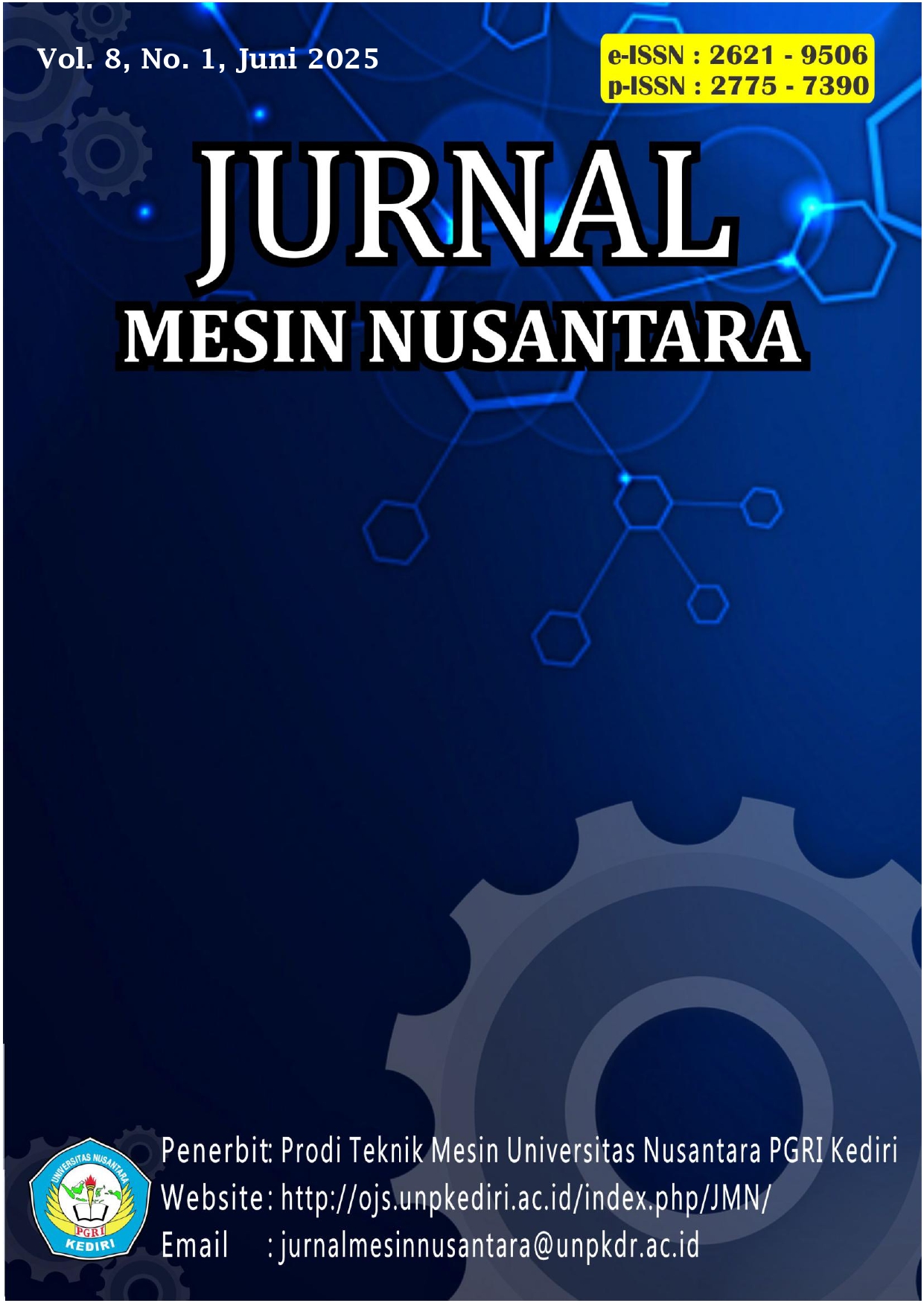Analisis dan Optimalisasi Sistem Suspensi Mobil Listrik Anobrain-1 Universitas Singaperbangsa Karawang
DOI:
https://doi.org/10.29407/jmn.v8i1.20417Keywords:
Material Suspensi, Sistem Suspensi Double Wishbone, Sudut ChamberAbstract
Sistem suspensi pada mobil listrik sangat penting untuk menopang beban, meredam getaran, dan menjaga stabilitas pada kecepatan tinggi. Suspensi Double Wishbone dengan lengan terhubung pada chasis dan roda adalah pilihan yang umum digunakan. Suspensi ini mengontrol sudut camber, meningkatkan pengendalian, dan mengurangi gejala roll atau sway, memberikan stabilitas saat melaju lurus. Suspensi Double Wishbone juga optimal untuk mobil listrik dengan sudut camber yang meningkatkan kontak roda dan memberikan akselerasi yang baik. Ketinggian roll center mobil ini adalah 0,156 m, dan tinggi center of gravity adalah 0,407 m dari titik bawah roda. Variasi material pada pegas shock absorber mempengaruhi sudut camber, dengan material ASTM-A401 Chrome Silicon yang optimal mendekati sudut camber 0° dan meningkatkan kontak roda. Perancangan mobil listrik perlu mempertimbangkan sudut koreksi pegas optimal 0° pada suspensi untuk stabilitas yang baik.
Downloads
References
1] A. Efendi, “Rancang Bangun Mobil Listrik Sula Politeknik Negeri Subang,” J. Pendidik. Teknol. dan Kejuru., vol. 17, no. 1, p. 75, 2020, doi: 10.23887/jptk-undiksha.v17i1.23057.
[2] O. N. Irvanda, “ANALISIS DAN DEVELOPMENT KESETABILAN KEMAMPUAN SISTEM SUSPENSI PADA MITSUBISHI LANCER SL,” 2019. [Online]. Available: https://api.semanticscholar.org/CorpusID:126890154
[3] A. Efendi, “Perancangan dan Analisis Perhitungan Rangka Mesin Mobil Listrik Sula Politeknik Negeri Subang,” J. Rekayasa Mesin, vol. 15, no. 2, p. 107, 2020, doi: 10.32497/jrm.v15i2.1843.
[4] E. Listijorini, S. Susilo, S. Ula, R. R. Ananda, and H. Haryadi, “MODELING AND DYNAMIC ANALYSIS OF VEHICLE SUSPENSION BASED ON STATE SPACE VARIABLE,” Trends Mech. Eng. Res., vol. 01, no. 02, pp. 66–70, 2023.
[5] R. Putra, A. Mukhtar, and I. Qiram, “Uji Kerja Dinamis Sistem Suspensi Pada Kendaraan Atv,” V-MAC (Virtual Mech. Eng. Artic., vol. 6, no. 2, pp. 67–70, 2021, doi: 10.36526/v-mac.v6i2.1520.
[6] T. Shim and P. C. Velusamy, “Improvement of vehicle roll stability by varying suspension properties,” Veh. Syst. Dyn., vol. 49, no. 1–2, pp. 129–152, 2011, doi: 10.1080/00423111003615196.
[7] M. H. Sadd, Elasticity : Theory, Applications, and Numerics, 4th ed. London: Academic Press, 2020.
[8] Suspension Secrets, “roll centre and roll moment,” suspensionsecrets.co.uk. https://suspensionsecrets.co.uk/roll-centre-and-roll-moment/
[9] R. Rajamani, Vehicle Dynamics and Control, 2nd ed. New York, 2011.
[10] B. Heißing and M. Ersoy, Chassis Handbook: Fundamentals, Driving Dynamics, Components, Mechatronics, Perspectives. Vieweg+Teubner Verlag, 2016. [Online]. Available: https://books.google.co.id/books?id=d7igDAEACAAJ
Downloads
Published
Issue
Section
License
Copyright (c) 2025 Muhammad Faisal Aldriansyah, Kardiman, Bobie Suhendra

This work is licensed under a Creative Commons Attribution-ShareAlike 4.0 International License.
Authors who publish with this journal agree to the following terms:
- Copyright on any article is retained by the author(s).
- The author grants the journal, right of first publication with the work simultaneously licensed under a Creative Commons Attribution License that allows others to share the work with an acknowledgment of the work’s authorship and initial publication in this journal.
- Authors are able to enter into separate, additional contractual arrangements for the non-exclusive distribution of the journal’s published version of the work (e.g., post it to an institutional repository or publish it in a book), with an acknowledgment of its initial publication in this journal.
- Authors are permitted and encouraged to post their work online (e.g., in institutional repositories or on their website) prior to and during the submission process, as it can lead to productive exchanges, as well as earlier and greater citation of published work.
- The article and any associated published material is distributed under the Creative Commons Attribution-ShareAlike 4.0 International License












